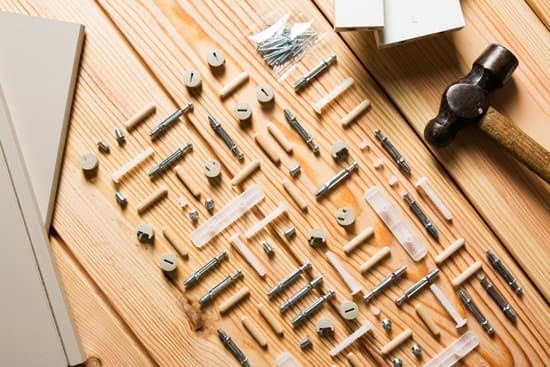Introduction to Cordless Routers in Woodworking
Cordless routers are an incredibly versatile tool, especially when it comes to woodworking. They can be used for a wide range of tasks, from routing intricate details and outline cuts on projects to making quick cuts through thicker pieces of wood. No matter what type of project you’re working on, having a cordless router at your toolbox is sure to come in handy.
Cordless routers come in a variety of shapes and sizes. Depending on the size of the job you plan to do, there will likely be an appropriate router available for your use. The main components that vary between these routers are the spindle size (determines the amount of power), bit size (determines the width and detail you can achieve) and speed settings (determines cutting speed). Additionally, some models may have additional features such as variable direction speeds or various accessories like dust collection bags/ hose attachments, edge guide etc.
No matter what kind of projects you plan on tackling with your new cordless router, safety should always remain your top priority. Always wear safety glasses and double-check your equipment before beginning any cuts. Be aware of loose pieces of clothing that might get caught in any moving parts as well. Additionally, keep children and pets away from were you are using the router to ensure their safety too! With all these things taken into consideration, cordless routers can be an invaluable asset when it comes to woodworking!
Overview of Advantages of Using a Cordless Router
Cordless routers are a convenient and lightweight alternative to large, bulky corded routers when it comes to woodworking. They offer the same precision and power of a typical corded router but with cordless models you can easily move around and work for longer periods of time without needing to be tethered by an electric extension cord. In addition, you don’t need to worry about dealing with long cords that may get in your way or cause trip hazards while using the router.
Furthermore, many cordless routers come with adjustable bases that allow users to pick specific depths where they want do cuts at before actually making them. This eliminates having to make multiple corrections due to guesswork if there isn’t much room for error. Additionally, most cordless models have quick release systems that make swapping out bits easier then ever before. Finally, not having a cable attached often means less vibration which can lead to cleaner cuts and greater accuracy over time.
Factors to Consider When Choosing a Cordless Router
When shopping for a cordless router, there are several factors to consider before making the purchase. First, it is important to consider how powerful or “torque” the router is. Different types of woodworking jobs require different levels of torque, and choosing an overpowered router can have disastrous consequences on the project. Second, it is essential to understand which type of bit-shaft attachment the router accepts. For example, some routers offer both fixed base and plunge base attachments while others focus on only one type. Understanding which type fits your needs can save you time and money in the long run. Thirdly, think about comfortability and ergonomic design when selecting a router since special attention must be given to prolonged use over extended periods of time due to safety reasons. Choose a light-weight one with soft grip handles so that you will be able to handle it correctly and prevent any accidents due to fatigue. Lastly, always check others reviews about a particular model as this may help you determine if it meets your expectations before making a final decision. This will also give you insight into potential durability issues or compatibility problems with certain types of bits or accessories that may arise with certain brands or models of routers.
Tips for Ensuring Optimal Performance from a Cordless Router
1. Be sure to read the instructions provided with your cordless router before you begin woodworking. Knowing how to safely and properly use the device is essential for optimal performance.
2. Always wear eye protection when operating a cordless router, as debris and fine dust can fly in many directions and potentially cause injury or harm.
3. Inspect the router bit before using it; be sure it is sharp and securely installed in the router so that it does not slip during use. A dull or improperly installed bit can cause rough cuts and other damage to your workpiece, leading to less-than-optimal results.
4. Check to make sure that all screws on the cordless router are securely fastened before use, and make adjustments as necessary if any become loose during operation. Loose screws may compromise the router’s ability to hold its settings accurately, leading to poor results or even hazardous situations if something becomes disconnected or falls off completely.
5. Consider investing in air filtration systems for your woodworking area when using a cordless router; these systems will help remove fine dust from the air, reducing airborne hazards from wood particles while also improving performance of your power tools by helping keep them clean and dust-free as they run.
6. Lubricate moving parts periodically in order to ensure smooth operations throughout the lifetime of your cordless router; cleaning all surfaces regularly with compressed air cans helps prevent clogging of delicate parts such as bearings and spindles which may hinder its performance otherwise.
7. Make slow movements when working with a cordless router; pushing too aggressively can make it difficult for the tool to cut properly through harder material, resulting in reduced performance due to burning out motor components or stalling entirely under too much pressure or strain placed on it at one time over extended periods of use.
Creative Ideas and Projects to Do with a Cordless Router
A cordless router is an essential tool for woodworking projects. It allows you to quickly and easily make a variety of cuts, shapes, and designs in wood without the need of cords or a lot of clunky setup time. With its powerful motor, you can make detailed and precise cuts in large pieces of wood with relative ease.
Some ideas and projects that can be done using a cordless router include: creating furniture such as bookcases, shelves, tables and chairs; making special details like grooves, decorative moldings or custom doorframes; cutting grooves for cable runs, ventilation grills or even for installing hinges; routing out small circles for handles and knobs; making perfect isosceles triangles for frames or picture corners; carving intricate shapes like hearts, stars or floral designs; creating inlays from different kinds of hardwoods and softwoods; creating jigs for repeatable projects like dovetails joints.
Cordless routers are also great for detailed DIY-projects like building toy boxes, birdhouses or any other project involving woods that require more tedious refinements. They’re great tools to help add detail to smaller wooden art projects such as painting panels but also larger sculptures crafted out of recycled boards. With its larger capacity battery packs cordless routers have become indispensable on bigger jobs. This means the router can sometimes be used while standing on the ground where an extension cord would become too expensive or too bulky to deploy.
Common Issues and Solutions for Troubleshooting Cordless Routers
One of the most common issues when using a cordless router for woodworking projects is battery life. If the battery isn’t lasting long, you should make sure the battery is fully charged before using it. You might need to replace the battery if it isn’t holding charge. Another common issue with cordless routers is dust and debris build-up. Make sure to keep your wifi router clean and free from any stuck particles which can affect its performance. Additionally, inspect the cutting blades to make sure they are sharp and that no damage has been sustained. You may also want to check the settings on your router as well as making sure that it’s securely attached to any work surface you’re using for a safe and successful result. Finally, an issue many people encounter are power interruptions; keep a spare set of freshly charged batteries around in case you experience any unexpected blackouts or outages while in use.
Conclusion
Cordless routers are a versatile tool for woodworking, and when used properly, can be incredibly useful for a wide variety of projects. From creating detailed dovetails to trimming tenons, a cordless router can be used to cut precise edges and create beautiful shapes in any workpiece. They are also great for adding decorative touches to furniture or cabinetry.
A major advantage of using a cordless router is its ability to make complicated cuts without the need for extensive setup time like traditional routers would require. Additionally, it’s much more convenient than an electrical router, which requires you to constantly move the cord around your workspace. Cordless routers also offer more control than manual routers since they are equipped with variable speeds and depth settings.
When shopping for a cordless router, consider features such as chuck size and accessories that best fit your particular needs. Battery life is important too; some models will run faster but overheat quickly when put under heavy pressure, while others combine long-lasting battery power with smooth performance.
Overall, exploring the many possibilities with cordless routers in woodworking allows you the freedom to explore different techniques and expand upon your skillset. With so many different features available today, finding the right tool can open up creative paths that weren’t possible before. In addition to complex joinery projects, these versatile tools can help finish any project”from cutting intricate molding and drilling holes in delicate pieces of furniture or cabinetry, to crafting refined decorations for doorways and picture frames”with ease.

Hi everyone! I’m a woodworker and blogger, and this is my woodworking blog. In my blog, I share tips and tricks for woodworkers of all skill levels, as well as project ideas that you can try yourself.





